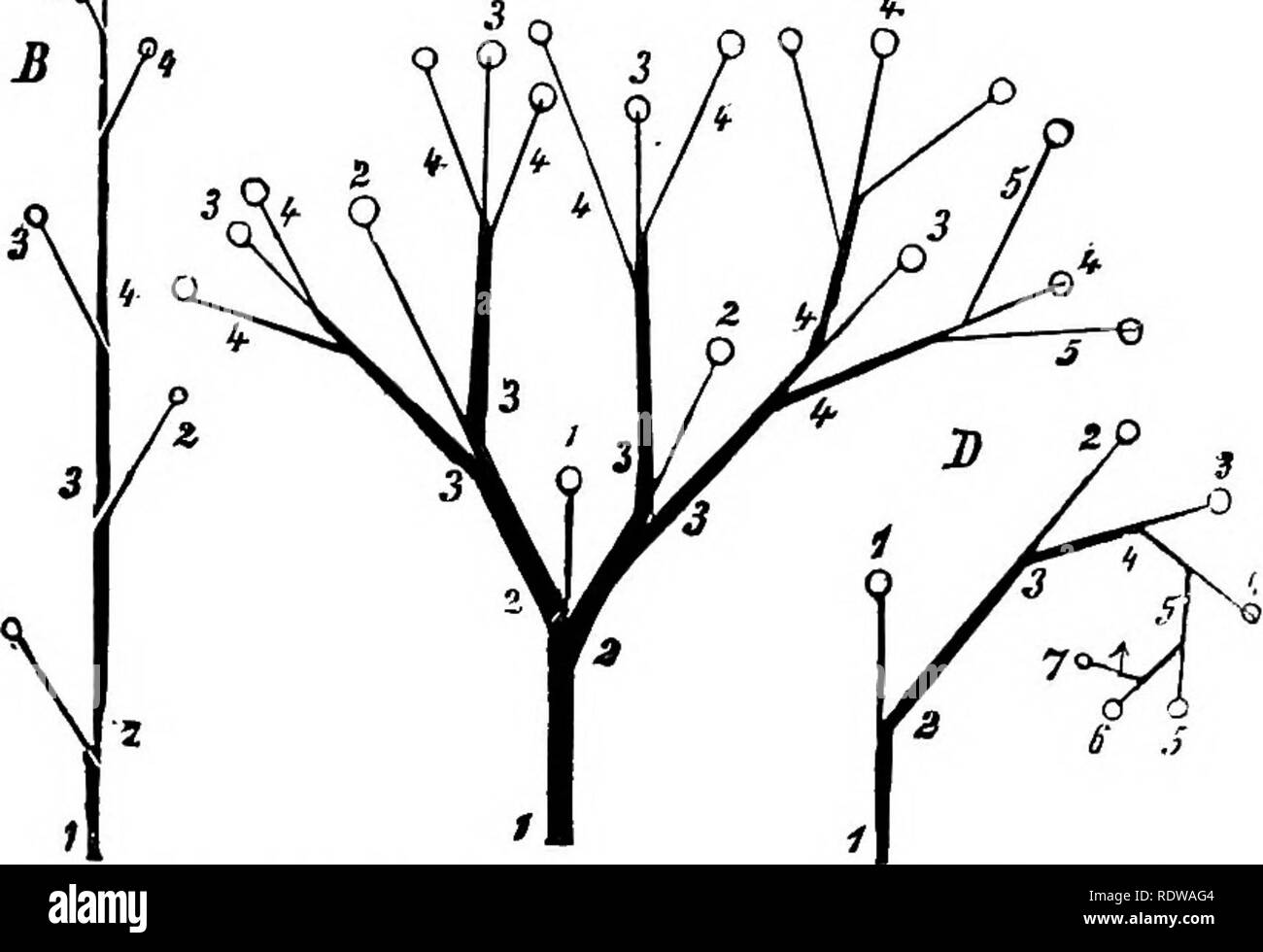. Botany for high schools and colleges. Botany. GENEBALIZED FORMS. 139 (4.) They always arise in acropetal* order. (5.) They grow more rapidly than the caulome does above their insertion. When they are numerous their rapid growth gives rise to the accumulation of phyllomes known as a. Bud. (6.) The phyllomes of any plant are always of a different form than the caulomes. 177.âGeneral Modes of Branching of Members. There are two general modes of the branching of the members of the plant-body. In the one, the apex of the growing mem- ber divides into two new growing points, from whicli branches p

Image details
Contributor:
The Book Worm / Alamy Stock PhotoImage ID:
RDWAG4File size:
7.1 MB (170.5 KB Compressed download)Releases:
Model - no | Property - noDo I need a release?Dimensions:
1910 x 1308 px | 32.3 x 22.1 cm | 12.7 x 8.7 inches | 150dpiMore information:
This image is a public domain image, which means either that copyright has expired in the image or the copyright holder has waived their copyright. Alamy charges you a fee for access to the high resolution copy of the image.
This image could have imperfections as it’s either historical or reportage.
. Botany for high schools and colleges. Botany. GENEBALIZED FORMS. 139 (4.) They always arise in acropetal* order. (5.) They grow more rapidly than the caulome does above their insertion. When they are numerous their rapid growth gives rise to the accumulation of phyllomes known as a. Bud. (6.) The phyllomes of any plant are always of a different form than the caulomes. 177.âGeneral Modes of Branching of Members. There are two general modes of the branching of the members of the plant-body. In the one, the apex of the growing mem- ber divides into two new growing points, from whicli branches proceed; this is the Dichotomous mode of branching (Fig. A Z Q C. Pig. ISO.âDiagrams of cymose monopodial branching. A and B, scorpioid cymes; C, forljed cymose monopodium, the compound or falsely dichotomons cyme (called also the dicMsium) ⢠/), helicoid cyme.âAfter Sachs. 118). In the other, the new growing points arise as lateral members, while the original apex of the parent stem still retains its place and often its growth ; this is the Mono- podial. mode of branching (Fig. 119). Both modes are sub- ject to many modifications, the most important of which are briefly indicated in the following table : A.âDICHOTOMOUS. 1. Forked dichotomy, in which both branches of each, bifurcat! ""n are equally developed (Fig. 118, A). * Acropetal, tending toward the summit; ivcim the Greet liicoa, summit, and â werda, to move toward.. Please note that these images are extracted from scanned page images that may have been digitally enhanced for readability - coloration and appearance of these illustrations may not perfectly resemble the original work.. Bessey, Charles E. (Charles Edwin), 1845-1915. New York : H. Holt